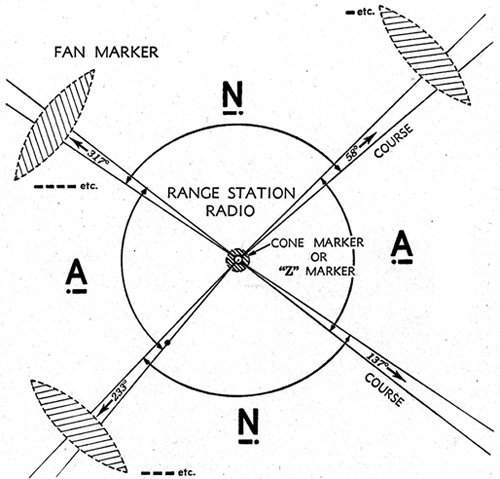This local copy has popped into my inbox from an ex RAF guy.
The document shows a really accurate method of position fixing, just by listening to some audio signals and looking up some tables.
Another audio based radionavigation method was the four course AN range used in the USA. Called the AN four course range because it transmitted along each of the four courses a directional signal with overlap, one lobe transmitting an A, the other lobe transmitting an N. Morse A is .- (dit dah) and morse N is -. (dah dit). When you were on course, the A and N lobes overlapped so you would hear a continuous tone in the headphones. If you drifted one side or the other, you would either hear the A or the N increasing in amplitude while the other letter decreased so you could tell which side of the course you were on.

Were both of these systems ones where the navigator got different signals into the two ears, and thus needed two working ears?
I recall a conversation from 1978, 22 years before I started flying, with someone who claimed to have a PPL and who said you needed both ears working for some instrument procedure.
I’m 100% certain the AN four course range only needed one ear (the mixing happened as a consequence of overlapping CW signals on the same frequency, it wasn’t two signals transmitted on a different frequency with two receivers into one earpiece each – especially given how big and heavy a radio receiver was when these systems were in use, you wouldn’t want to need to carry two). I’d have to guess Consol was similar. The document posted doesn’t have any mention of stereo headphones.
The last Radio Range station that I can recall was at Diyarbakir in Turkey in the early 70s. It was the forerunner to VOR and ILS and yes you only had to listen with one ear, to hear either A .; N or the continuous equi-signal.
Consol needed a chart to plot the bearing, measured by counting the number of dots and then dashes or vice versa. A pencil was used to set the rhythm. You also had to know to a reasonable degree of accuracy where you were as the dot dash pattern repeated every 15 degrees from the transmitter.
In the 80’s and possibly the 90’s there was still an operating CONSOL station i Norway. It was clearly marked as “CONSOL” on Jepp enroute charts, but in practise I guess it was used as a very long range NDB.